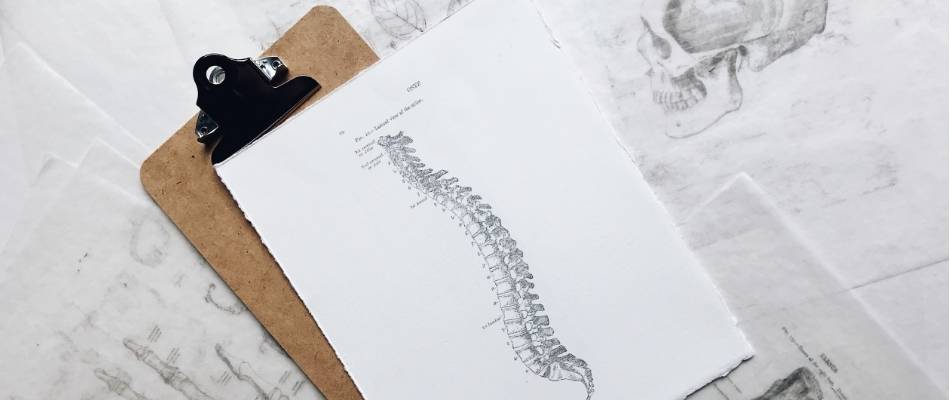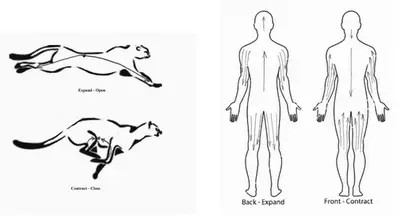Here is a statement that needs to be intrinsically understood to progress in Tai Chi: Internal energy building and circulation, balance, and martial abilities are dependent on posture. For those of you that are one step ahead of me, you are seeing the potential bang-for-your-buck by focusing on posture over other more trivial matters, and learning about the six harmonies is the way to get there.
Small postural improvements have huge impact on your health, practice, and mental state.
Posture is the tai chi version of the Pareto Principle which states that 20% of your activities realize 80% of the results and vise-versa. Small postural improvements have huge impact on your health, sitting at your desk, your tai chi form, balance, push hands prowess, etc. We cover how to improve posture while doing the form specifically in another article to see how to apply what you learn about the six harmonies. Check it out when you are done here.
Pro-tip: The great degree to which posture affects our mood, energy, and ability to work is finally making it a huge focus in health circles and have led to an explosion in ideas for how to improve posture.
How do we evaluate our posture and make corrections?
We could have proper instruction, do chiropractic work or even Rolfing. But thankfully, Tai Chi also has a blueprint to evaluate yourself and make corrections in real time.
The Six Harmonies – History
Dai Long Bang was a master of the internal martial arts who lived in the 18th Century. His family cultivated and developed Xing Yi Quan, one of the two other major internal martial arts. During his life he recorded a great deal of tactical points of martial arts and wrote “The Six Harmonies Fists.” It’s from this work that the Six Harmonies are taken.
What are the Six Harmonies?
The Six Harmonies are a tai chi theory used to instruct how to coordinate movements between three external joints (6 total, 3 per side) and the coordination of three internal processes that align emotion and intention. “Harmony” does not only mean “moving together” despite this being a good start. It also connotes a connection between the movements.
External Harmonies (san wai he)
1) The hands harmonize with the feet.
2) The hips harmonize with the shoulders.
3) The elbows harmonize with the knees.
Internal Harmonies (san nei he)
1) The heart harmonizes with the intention.
2) The intention harmonizes with the Chi.
3) The Chi harmonizes with the movement.
Coordination of the Six Harmonies
“Coordination” or “Harmonizing” includes good posture and the body parts moving in unison. It does not mean you move like a robot or that your body parts aren’t moving in different directions at times. Harmony can also refer to the angles of the joints being the same or the body parts moving in the same direction. An example of this last point could be your hand traveling forward and your toes pointing in that direction.
Coordination of the External Harmonies
Coordination of the external harmonies is a straightforward alignment of pairs of joints. In tai chi we are initially concerned with the hip and shoulder alignment because the other two harmonies will be dependent on this primary structural alignment. This can easily be studied by looking in the mirror and making concrete adjustments. Let’s take a look:
The hands harmonize with the feet: the toes are pointed in the direction that the hand is traveling and the step and strike/grab arrive at the same time. Proper alignment of hands and feet leads to heavy pushes or strikes where the support of the ground is felt rather than arm strength.
The hips harmonize with the shoulders: the shoulders are aligned over the hips. The hip joint (kua) and armpit are not collapsed. Rotational power is generated by the hips and carried out though the torso. You can accomplish this harmony by turning your whole torso as you move rather than just your arm and by keeping an upright posture as though you are sitting on an invisible chair.
The elbows harmonize with the knees: The elbows shrink and expand in unison. A great example is shooting a free throw in basketball. The player crouches down, springs up, and the hands are over his head releasing the ball at the second that the entire body has expanded.
Coordination of the Internal Harmonies
Internal coordination, harmony, is dependent on external coordination. So if you have not checked your posture throughout different parts of the tai chi form, external coordination is the low hanging fruit.
Coordinating the internal harmonies is putting the intention and will (the brains and heart) behind the movement. Yes you can just step forward and grab a doorknob. This would be more akin to focusing on the doorknob, reading your body, and consciously reaching for and seizing the doorknob.
The heart harmonizes with the intention: The heart is the emotional that sets the motivational fires burning. Back to the doorknob for practicality and humor’s sake. Imagine being mad at the doorknob and grabbing it. Imagine that it is elusive and if you don’t grab it at the right second it will disappear. When I first wrapped my mind around this I woke up to the fact of how unintentional I move about throughout the day.
The intention harmonizes with the Chi: Your degree of intention will determine your degree of concentration. Walking by a tai chi class you would just see someone taking a step. The person however would be concentrating on the accuracy of this step and setting it in motion.
The Chi harmonizes with the movement: Now it is time to act. Your posture is good you are focused and choose to move. The brain makes all movements happen. Once your intention is set you fire off nerve impulses and off you go.
We began talking about simple movements and end the same way. I hope this article provides 1) a way for us to self-monitor and make adjustments and 2) dramatically see the difference between a typical step and the movements of tai chi.
Betty Edwards in Drawing with the Right Side of the Brain (ad) described it the best when she talked about getting lost and forgetting about time when you incorporate intention and balance in the creative process. If I get nothing else out of tai chi class, I at least get a break from the continual ramble of thoughts (grocery lists, where did I put my…) that usually accompanies my day.
How to Apply Tai Chi Theories to Your Practice and Life
I get it, sometimes tai chi can get out there with many of the concepts and theories. The original thinkers were bound by the same limitations we are – trying to use words to describes something infinitely complex that could have a huge impact on our life. I think they have done a pretty good job of it once you chew on it for awhile. Like the Six Harmonies, I worked to explain two other theories that are really important for your tai chi development and have implications outside of the classroom.




